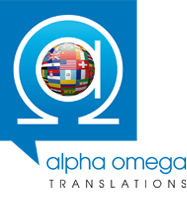By Sarah-Claire Jordan
 Globalization is the next big step for any business lately, whether they are ready for it or not. The way the international market is developing is making it almost impossible to maintain a competitive edge and stay local at the same time. One important part of being ready for globalization is having a brand name that can be used in any of the target languages, as the name itself generally does not get translated.
Globalization is the next big step for any business lately, whether they are ready for it or not. The way the international market is developing is making it almost impossible to maintain a competitive edge and stay local at the same time. One important part of being ready for globalization is having a brand name that can be used in any of the target languages, as the name itself generally does not get translated.
There are many factors that go into brand name localization, but it doesn’t need to be so complicated. For starters, try to keep brand and product names simple, making sure they are made up of no more than two words. Staying simple means your brand name is more likely to fit in nicely with the particular syntax of the target language, which may be more complex in terms of case, gender, and other factors.
Once you have your simple name chosen, take a closer look at the linguistics of it. Make sure to use certain vowels and avoid others, depending on the target market and languages. The same thing goes for many consonants that are common in English, especially when they are next to each other. This isn’t a common thing in many languages, but for some it might be fine. The writing system used is also important to take into account, as some letters sound different in different languages.
Finally, make sure the brand name isn’t too similar to any inappropriate or offensive words in the target language. If you are marketing to various target markets, you might have to adapt the name for some target languages in order to avoid problems. Many companies have had issues getting a product off the ground in a target market because of this, such as the case of a French baby food manufacturer some ten years ago. The original name, Bledina, sounded very much like a vulgar word in Russian. They did not know this until after launching a Russian ad campaign, however, and the baby food did not sell very well at all.
As you can see, brand names generally do not need to be translated, but they might need to be localized, or adapted to the cultural and linguistic context of the target market in order to be successful. The easiest way to deal with this is to start off with a name that either works in most languages or is easily adaptable. As with any localization issue, doing your homework on every single target market will save you time and money in the end.




